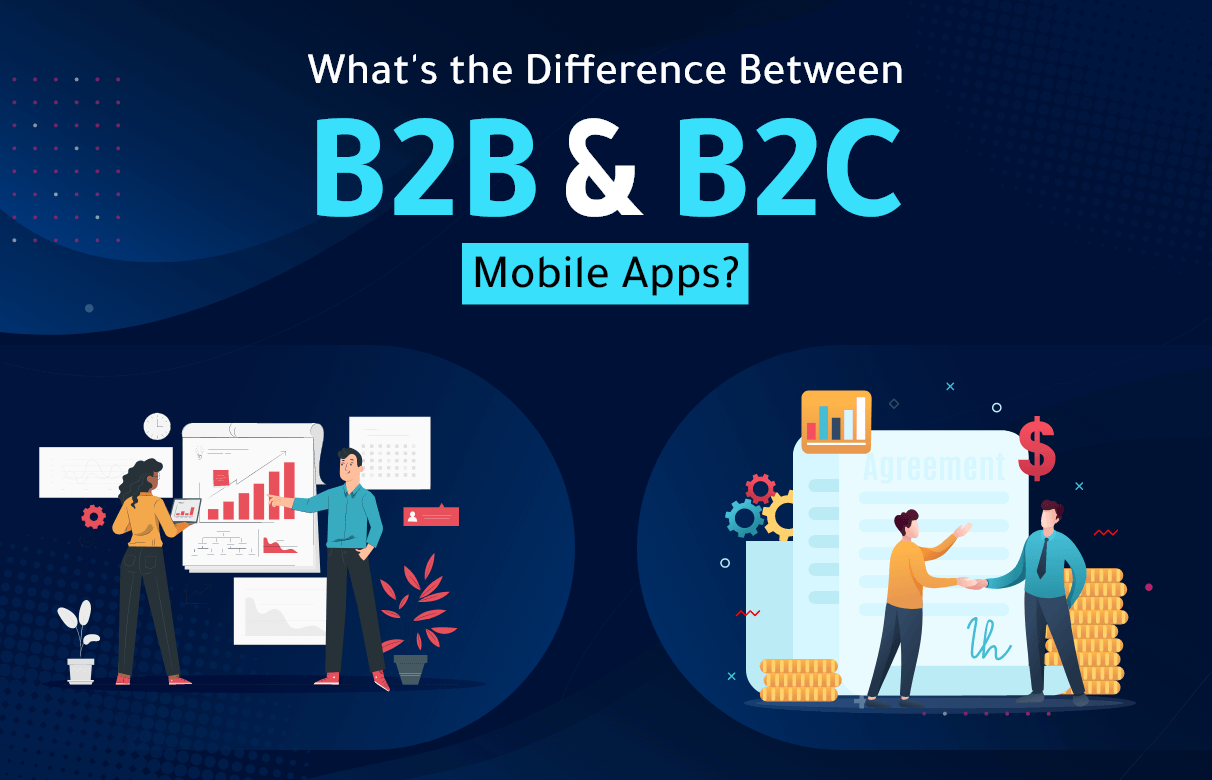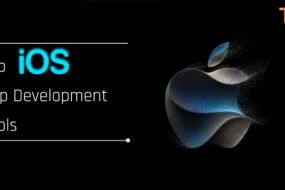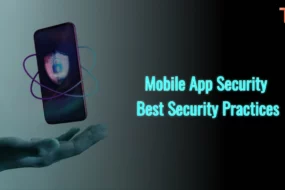- Home
- App Development
- What’s the Big Difference be ...

The single most crucial thing you can do before releasing anything into the world, be it a company, a dish, or a mobile app, is to understand your target audience.
especially a mobile app, which is occasionally even more significant and frequently a business. Who you are building an app for when you make the decision to do so is a crucial factor in determining everything that goes into the app. Everything about it, from the UI/UX design to the functionality, language, and even the name, must be created with the intended customers in mind.
The distinction between B2B apps and B2C apps is the most general classification you need to establish among the various target user groups.
Describe B2C apps.
The most prevalent types of apps in app stores are known as business to consumer or B2C apps. These applications are created with end users’ solitary use in mind. B2C apps carry out a variety of tasks for customers, from purchasing goods to filing taxes and all in between, typically for amusement or utility. There are about 9 million apps in use worldwide, so pick any three of Uber, Airbnb, Bonobos, and more as examples.
B2B apps: what are they?
Apps for other businesses are known as business to business or B2B apps. So you create an app that another firm, team, or office may use to better manage their operations or carry out duties connected to their jobs. These include apps for sales, inventory management, point of sale, enterprise, and a wide range of other functions. B2B apps include Asana, Hootsuite, Salesforce, Mailchimp, and numerous additional programmes you would only learn about in business settings.
What distinguishes B2B and B2C apps from one another?
As we mentioned above, there are variations between B2B apps and B2C apps in terms of design, execution, feature sets, and much more. The discrepancies are caused by the consumer psychology of these apps. The demands and expectations served by B2C apps differ from those of B2B apps. Let’s examine some of the main distinctions.
B2C apps must be easy to use.
And by prettier, we don’t just mean with sprinkles and rainbows. We’re suggesting that B2C applications ought to be created for the most basic of users. The user interface needs to be straightforward and easy to use for everyone, whether they are a law graduate or a high school dropout.
There are numerous choices when it comes to B2C apps. excessively many There are multiple apps available for every function an app can perform, and there are over 2 million apps available in the app stores. Any app that introduces even a small amount of complexity to the user risks having them switch to a simpler app.
B2B apps, on the other hand, are designed with a specific group of employees in mind. These persons are experienced specialists who are probably quite good at the task the apps are designed to perform. B2B apps may therefore manage a certain degree of complexity. While B2B apps must rigorously avoid using any jargon, they are allowed to utilise business-related language and jargon. B2B apps may have a learning curve because you can legitimately expect B2B users to go to the trouble of learning while being used for “work.”
B2B apps have a greater cost per lead for marketing.
B2B and B2C apps are extremely different from one another in terms of how consumers are acquired.
B2C apps are primarily found through app stores, with occasional help from web advertisements. Even though it has a very modest impact, user’s relatives and friends’ recommendations also matter.
Therefore, improving app store optimization, user reviews, star ratings, and social media buzz are key to increase app discovery for B2C apps. To spread the word and draw users to your software, Youtube adverts and even TV commercials are used. There are several banner and interstitial adverts in use. The goal is to become as visible as you can. The key to successful B2C marketing is to attract a sizable number of unique users—the more, the merrier.
On the other hand, B2B apps take a more internal route to pollination. Through trade shows, professional magazines, and networking, you must spread the message. An important factor in getting your B2B app noticed is word of mouth. You need to win over a company’s key decision makers, who will undoubtedly give you plenty of thought before approving you.
Therefore, you need a robust sales cycle when it comes to gaining users for a B2B software. B2B customers don’t simply download an app and give it a go. Before using the app, they thoroughly examine it and must be persuaded of its value.
Because of this, B2B apps have a substantially greater marketing cost per lead than B2C apps. The return on investment is proportionate because, if you win over a B2B buyer, you are more likely to secure a big account than a small one.
In B2C apps, emotion is crucial.
B2C apps are clearly downloaded for individual usage. These uses typically focus on leisure, shopping, staying in touch, wellness, etc. Numerous emotional aspects, such as mood, time, season, friends’ opinions, brand reputation, trendiness, and more, can influence how long and how frequently these apps are used.
Even the choice to download or remove an app can occasionally be driven by irrational, emotional, and personal factors that are beyond your control.
Your B2B app must therefore compete not just with other apps but also with the aforementioned non-empirical elements.
Understanding consumer sentiment is crucial when creating B2C apps. In-depth user research and psychological profiling are frequently used by UI designers to identify patterns, colours, and designs that would emotionally connect with their users.
User emotions heavily influence the design process of B2C apps, whether it’s to revive a specific mood or to create a sense of urgency. Designers may utilise calm-inspiring hues and layouts or small animations to make users smile like children. In other areas of the app, such as the “purchase now” button, they employ huge, strong colours and flashing or blinking buttons to create an air of urgency. These design tenets are all based on user emotions.
That does not imply, however, that B2B apps must be dull, colourless, or created using a confusing cookie-cutter template. B2B apps also require a slick user interface, easy navigation, and a respectable level of aesthetic appeal.
We are arguing that a B2B app is suitable as long as it effectively completes the tasks at hand and saves a company time, aggravation, and money. You won’t have to worry about being uninstalled in a capricious fit of rage once these qualities win over your clientele and you land the account.
The professionalism of B2B apps determines how they are designed. Apps’ elegance, sexiness, and minimalism must appeal to their target corporate audience. The B2B apps must perform well and appear classy enough for a reputable brand or a Fortune 500 organisation.
Apps for B2B and B2C have distinct revenue models.
B2C apps primarily rely on ad revenue, in-app sales, and a negligible amount from download fees. Although the subscription model is growing in popularity, only high-end apps like Netflix, Amazon Prime, and Spotify have achieved significant success to date.
B2C apps don’t have any currency with in-app purchases or ad revenue. They impose hefty upfront fees either once or on an annual basis.
B2C apps require more frequent updates.
Much more frequently than B2B apps, B2C apps require regular updates. This is due to the fact that B2C apps must be kept current and relevant to ensure that consumers stay interested in them and do not become disinterested. Therefore, to maintain user engagement and the app’s freshness, developers must frequently add new features, modify the design, address bugs, integrate user feedback, and engage in a variety of other related tasks.
B2B apps also require upgrades, but they do so significantly less regularly. Businesses value consistency more than anything else and want their apps to feel enduring. This does imply that the initial design must be excellent as you. This does imply that the design must be excellent from the start because there won’t be many opportunities for a redo.
A Conclusion
Apps for B2B and B2C have various variances from one another. Their approaches and methodologies are all distinctly different in how they are created, developed, promoted, and maintained. This requires you, as a developer, to be aware of these variations and plan your development accordingly. As a stakeholder, this means that before starting a drawn-out and costly app development process, you should ask your developers the appropriate questions.
B2B and B2C applications have one thing in common: they are strong tools that empower, enable, and engage users in a manner that few other pieces of technology can. Quality mobile apps are always in demand and are rewarded handsomely when they perform well, whether the task at hand is managing a business effectively or organising the ideal weekend getaway.





